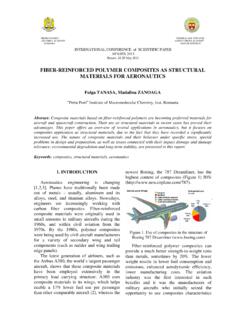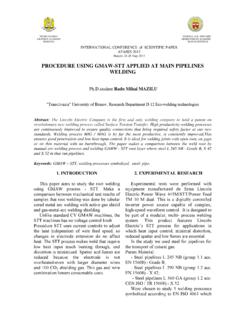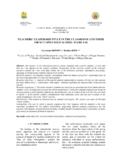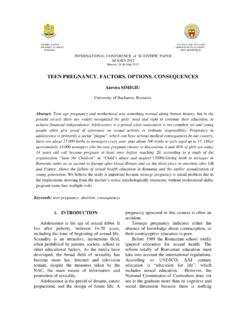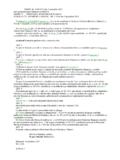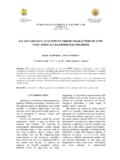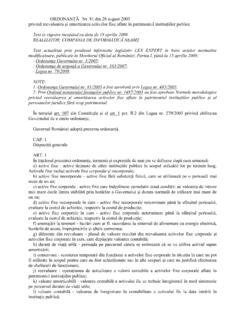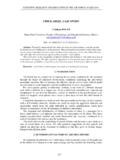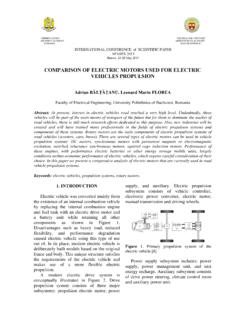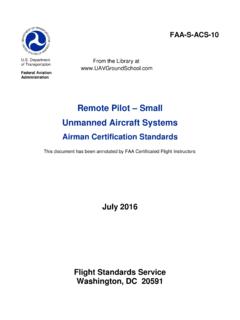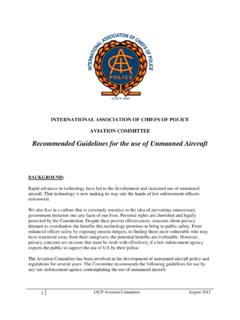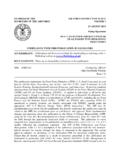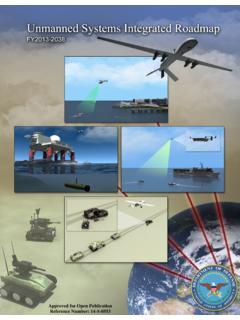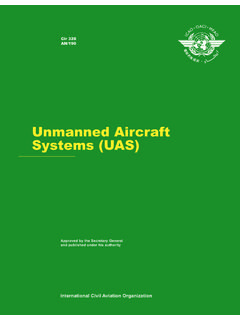Transcription of UNMANNED AERIAL VEHICLE IN MILITARY …
1 UNMANNED AERIAL VEHICLE IN MILITARY operations Gheorghe UDEANU, Alexandra DOBRESCU, Mihaela OLTEAN Nicolae B lcescu Land Forces Academy, Sibiu, Romania DOI: Abstract: UNMANNED AERIAL Vehicles (UAVs) make significant contributions to the war fighting capability of operational forces. The assumption is that piloted, remotely piloted, and autonomous vehicles have advantages and disadvantages in MILITARY operations , and that these vary in strategic significance for different levels of conflict. Since it is essential for the defense establishment to consider the strategic and technological implications of these types of AERIAL vehicles, this study is devoted to addressing the issues raised by the new generation of AERIAL vehicles.
2 As technological advances increase the lethality of weapons on the modern battlefield, it is inevitable that UAVs will reduce the risks to humans in combat. If there is a fundamental constraint on the development of UAVs, it is that technology promises to find purely UNMANNED solutions to combat but cannot deliver on that promise. Political and MILITARY authorities should approach with caution the prospect of a world in which automated systems select MILITARY targets and employ lethal ordnance. Keywords: drones, strike, MILITARY operations , UAV; Acronyms UAV(S) UNMANNED AERIAL vehicles (systems) UCAV UNMANNED combat AERIAL vehicles IMINT Imagery intelligence HVT High Value Targets GCS Ground Control Station IS(TA)R Intelligence, Surveillance, (Target Acquisition) and Reconnaissance 1.
3 INTRODUCTION UAV history The UAV is an acronym for UNMANNED AERIAL VEHICLE , which is an aircraft with no pilot on board. UAVs can be remote controlled aircraft ( flown by a pilot at a ground control station) or can fly autonomously based on pre-programmed flight plans or more complex dynamic automation systems. UAVs have most often been associated with the MILITARY but they are also used for search and rescue, surveillance, traffic monitoring, weather monitoring and firefighting, among other things. The beginning of UAVs started with the Austrian attack against the city of Venice with UNMANNED balloons loaded with explosives.
4 That was the earliest recorded use of an UAV. Although some of the balloons worked and successfully managed to bomb The Republic, others were caught in a change of wind and blown back over Austrian lines, [1]. Later, during World War I and shortly after, using Low s radio control techniques, the Royal Flying Corps Ruston Proctor AERIAL Target was built in 1916. The concept was to develop a small, very simple aircraft, pack it with explosives and then guide it into a designated target. Shortly after, on 12th of September, Hewitt-Sperry SCIENTIFIC RESEARCH AND EDUCATION IN THE AIR FORCE-AFASES 2016199 Automatic Airplane made its first flight.
5 These two concept planes are considered the ancestors of today s cruise missiles, [2, and 7]. World War II reveals more UNMANNED AERIAL torpedo concepts developed by US Army Air Forces and Navy. Functioning on the same radio-controlled principle, many aircraft were modified to become flying bombs, some of which are: Culver "PQ-8", Culver PQ-14 Cadet, B-17 Flying Fortress and B-24 Liberator, [3]. Cold War brings an innovative use of an UAV, other than AERIAL torpedoes. It seemed like gathering information with an UNMANNED flying VEHICLE is safer and more efficient.
6 To gather data from nuclear tests, several B-17 Flying Fortresses were transformed into drones in 1946. Reconnaissance drones were also built in the 1960s like the early, not so specialized Ryan Fire bee. Others followed, using a more advanced technology: YQM-94 B- Gull Compass Cope B and Lockheed D-21, [4, 5, and 6], see figure 1. (a) (b) FIG. 1. UAVs history, a. YQM-94 B-Gull Compass Cope B, [5] b. Lockheed D21B [6]. Classification and missions of the UAVs The large variety of UAVs can be classified according to several characteristics like role, range, weight, endurance, maximum altitude, wing loading, engine type etc.
7 Classificat ion by ro le for MILITARY area: ISTAR, UCAV, mult i-purpose, radar and Communication Relay, AERIAL delivery and resupply, research and development. UCAV stands for UNMANNED combat AERIAL vehicles. This category contains aircraft that are highly maneuverable and are able to engage in air to air combat and also provide precision weapon delivery to surface targets, see Figure 2 and Table 1. UCAV MQ1 B Predator [12] 200 REMOTELY AND PILOTED AIRCRAFT SYSTEMS / LAW AND POLICIES Table1. MQ-1 Predator features Span 14,8 m Empt y weight 512 kg Engine - Rotax 115 hp Max.
8 Loaded 1020 kg Maximum speed 217 km/h Range 1100 km Service ceiling 7600 m Endurance 24 h ISTAR is a system using UAVs to gather enemy information, locate target and petrol hostile air space without risking lives of the operators. Gathering such information by reconnaissance UAVs is more effective and voids putting soldier lives at risk. Radar and communication relay UAVs are essentially an aerodynamic balloon filled with helium and air and are used for low-level surveillance system that uses aerostats as radar platforms, provide low-level trafficking or also provide television and radio signals.
9 Multi-purpose UAVs are usually modified reconnaissance UAVs that are weaponized. Their primary mission is usually interdiction and conducting armed reconnaissance against critical, perishable targets. These UAVs can also and strike using self-guided weapons. The UAV in AERIAL /Supply delivery category are designed for pin-point delivery of small cargo items such as ammunition and food supplies to Special Forces. The only UAV in this category is the CQ-10 Snow Goose. The most important missions of the UAV for a civil area is: data acquisition and mo nitoring ( pipe line and power line survey, border patrol, crisis management), spo rts and recreation, commercial flights ( agr icultur al operations ), communications ( retranslations data) and research, [13].
10 Considering the complexity and dangerousness of nowadays modern battlefield, the use of UAVs in MILITARY operations is mandatory. The UAV ( UNMANNED AERIAL VEHICLE ), also known as UAS ( UNMANNED AERIAL System) or commonly known as a drone is a powered, AERIAL VEHICLE that does not carry a human operator, uses aerodynamic forces to provide VEHICLE lift, can fly autonomously or be piloted remotely, can be expendable or recoverable, and can carry a lethal or non-lethal pa yload, [8, 9, and 10], see of communications from a UAV mission in Figure 3.
